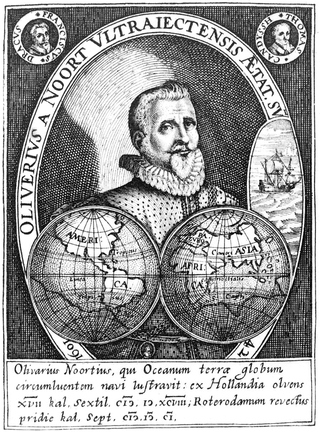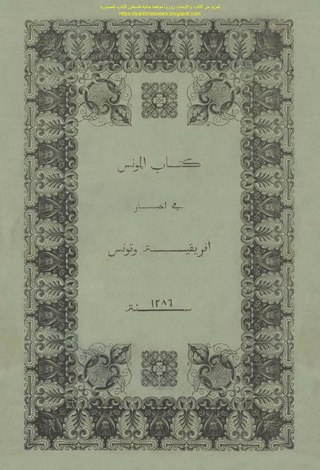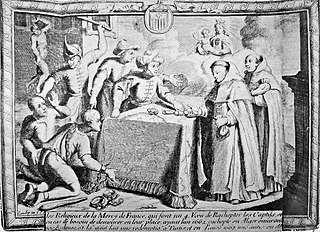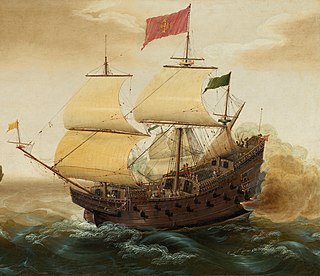Related Research Articles

A privateer is a private person or vessel which engages in maritime warfare under a commission of war. Since robbery under arms was a common aspect of seaborne trade, until the early 19th century all merchant ships carried arms. A sovereign or delegated authority issued commissions, also referred to as letters of marque, during wartime. The commission empowered the holder to carry on all forms of hostility permissible at sea by the usages of war. This included attacking foreign vessels and taking them as prizes and taking crews prisoner for exchange. Captured ships were subject to condemnation and sale under prize law, with the proceeds divided by percentage between the privateer's sponsors, shipowners, captains and crew. A percentage share usually went to the issuer of the commission.
The English silk-weaver William Baffin became a navigator, explorer and cartographer. He is primarily known for his attempt to find a Northwest Passage from the Atlantic to the Pacific, during the course of which he was the first European to discover Baffin Bay situated between Canada and Greenland. He was also responsible for exceptional surveys of the Red Sea and Persian Gulf on behalf of the East India Company.

The Barbary pirates, Barbary corsairs, or Ottoman corsairs were mainly Muslim pirates and privateers who operated from the Barbary states. This area was known in Europe as the Barbary Coast, in reference to the Berbers. Slaves in Barbary could be of many ethnicities, and of many different religions, such as Christian, Jewish, or Muslim. Their predation extended throughout the Mediterranean, south along West Africa's Atlantic seaboard and into the North Atlantic as far north as Iceland, but they primarily operated in the western Mediterranean. In addition to seizing merchant ships, they engaged in razzias, raids on European coastal towns and villages, mainly in Italy, France, Spain, and Portugal, but also in the British Isles, the Netherlands, and Iceland.

Olivier van Noort was a Dutch merchant captain and pirate and the first Dutchman to circumnavigate the world.

The Anglo-Spanish War (1585–1604) was an intermittent conflict between the Habsburg Kingdom of Spain and the Kingdom of England that was never formally declared. It began with England's military expedition in 1585 to what was then the Spanish Netherlands under the command of the Earl of Leicester, in support of the Dutch rebellion against Spanish Habsburg rule.
John Ward, also known as Birdy or later as Yusuf Reis, was an English pirate who later became a Corsair for the Ottoman Empire operating out of Tunis during the early 17th century.
This timeline of the history of piracy in the 1620s is a chronological list of key events involving pirates between 1620 and 1629.

Siemen Danziger, better known by his anglicized names Zymen Danseker and Simon de Danser, was a 17th-century Dutch privateer and Barbary corsair based in Ottoman Algeria. His name is also written Danziker, Dansker, Dansa or Danser.
Sir Michael Geare was a 16th-century English sailor, privateer and merchant. One of the many Sea Dogs who plagued the Spanish Empire during the Elizabethan age, Geare was well known to the Spaniards of the West Indies and the Spanish Main as commander of the Little John. He remained one of the most active in the region throughout the 1590s and up until his retirement in 1603.

Anglo-Turkish piracy or the Anglo-Barbary piracy was the collaboration between Barbary pirates and English pirates against Catholic shipping during the 17th century.

The Sea Dogs were a group of English privateers and explorers authorised by Queen Elizabeth I to raid England's enemies, whether they were formally at war with them or not. Active from 1560 until Elizabeth's death in 1603, the Sea Dogs primarily attacked Spanish targets both on land and at sea, particularly during the Anglo-Spanish War. Members of the Sea Dogs, including Sir John Hawkins and Sir Francis Drake, also engaged in illicit slave trading with Spanish colonies in the Americas.
This timeline of the history of piracy in the 1610s is a chronological list of key events involving pirates between 1610 and 1619.

The Battle of Puerto Caballos was a military event during the Anglo–Spanish War to capture the Spanish town and port of Puerto Caballos on 17 February 1603 by an English fleet under Christopher Newport and Michael Geare. The English were able to achieve victory after a bitter fight. Two Spanish galleons were captured, one of which was subsequently burned. The Anglo-French consortium occupied the area and after two weeks withdrew with captured booty.

The Battle of Flores (1592), also known as Cruising Voyage to the Azores of 1592, or the Capture of the Madre de Deus describes a series of naval engagements that took place from 20 May to 19 August 1592, during the Anglo-Spanish War. The battle was part of an expedition by an English fleet initially led by Sir Walter Raleigh, and then by Martin Frobisher and John Burgh. The expedition involved the capture of a number of Portuguese and Spanish ships including the large Portuguese carrack Madre de Deus, after a long naval battle off the island of Flores in the Azores. The expedition, particularly the capture of the great carrack, was a financial and military success. The rich cargo aboard the carrack, which at the time equaled nearly half the size of the Kingdom of England's royal annual revenue, was subject to mass theft when it arrived in Dartmouth, England, followed by quarrels over the shares of the prize. The expedition had formative consequences for the English both financially and on the future of English exploration.

The Capture of Recife also known as James Lancaster's 1595 Expedition or Lancaster's Pernambucan expedition was an English military expedition during the Anglo–Spanish War in which the primary objective was the capture of the town and port of Recife in the Captaincy of Pernambuco in the Portuguese colony of Brazil in April 1595. An English expedition of ships led by James Lancaster sailed via the Atlantic capturing numerous prizes before he captured Recife. He held the place for nearly a month and then proceeded to defeat a number of Portuguese counterattacks before leaving. The booty captured was substantial, Lancaster chartered Dutch and French ships that were also present there thus making the expedition a military and financial success.

The Dutch expedition to Valdivia was a naval expedition, commanded by Hendrik Brouwer, sent by the Dutch Republic in 1643 to establish a base of operations and a trading post on the southern coast of Chile. With Spain and the Dutch Republic at war, the Dutch wished to take over the ruins of the abandoned Spanish city of Valdivia. The expedition sacked the Spanish settlements of Carelmapu and Castro in the Chiloé Archipelago before sailing to Valdivia, having the initial support of the local natives. The Dutch arrived in Valdivia on 24 August 1643 and named the colony Brouwershaven after Brouwer, who had died several weeks earlier. The short-lived colony was abandoned on 28 October 1643. Nevertheless, the occupation caused great alarm among Spanish authorities. The Spanish resettled Valdivia and began the construction of an extensive network of fortifications in 1645 to prevent a similar intrusion. Although contemporaries considered the possibility of a new incursion, the expedition was the last one undertaken by the Dutch on the west coast of the Americas.

The Blockade of Western Cuba, also known as the Watts' West Indies Expedition of 1591, was an English privateering naval operation that took place off the Spanish colonial island of Cuba in the Caribbean during the Anglo–Spanish War. The expedition along with the blockade took place between May and July 1591 led by Ralph Lane and Michael Geare with a large financial investment from John Watts and Sir Walter Raleigh. They intercepted and took a number of Spanish ships, some of which belonged to a Spanish plate convoy of Admiral Antonio Navarro, and protected by the Spanish navy under Admiral Diego de la Ribera intending to rid English privateers. The English took or burnt a total of ten Spanish ships including two galleons, one of which was a valuable prize. With this success and the loss of only one ship the blockade and expedition was terminated for the return to England. The blockade was one of the most successful English expeditions to the Spanish Main during the war militarily and financially.

Dainty was an English race-built galleon that began to be built in 1588. The original name was Repentance, but this was soon changed. It participated in some naval engagements in the Anglo-Spanish War (1585–1604). In 1593 it sailed from England under Richard Hawkins to navigate the Pacific Ocean and circumnavigate the world, but was captured the following year by the Spaniards when it was sailing off the coast of what is now Ecuador. It was commissioned by the Spaniards as Nuestra Señora de la Visitación, serving in the South Pacific for several years.
Luis Fajardo y Ruíz de Avendaño,, known simply as Luis Fajardo, was a Spanish admiral and nobleman who had an outstanding naval career in the Spanish Navy. He is considered one of the most reputable Spanish militaries of the last years of the reign of Philip II and the reign of Philip III. He held important positions in the navy and carried out several military operations in which he had to fight against English, Dutch, French and Barbary forces in the Atlantic, the Caribbean and the Mediterranean. He is known for the conquest of La Mamora in 1614.

Acts of grace, in the context of piracy, were state proclamations offering pardons for acts of piracy. General pardons for piracy were offered on numerous occasions and by multiple states, for instance by the Kingdom of England and its successor, the Kingdom of Great Britain, in the 17th and 18th centuries.
References
- 1 2 Lane, Kris E. (1998). Pillaging the empire : piracy in the Americas, 1500–1750. Armonk, N.Y.: M.E. Sharpe. ISBN 0-7656-0256-3. OCLC 37903443.
- ↑ Florina H. Capistrano-Baker; Meha Priyadarshini, eds. (2020). Transpacific engagements : trade, translation, and visual culture of entangled empires (1565–1898). Makati City, Philippines: Ayala Foundation. ISBN 978-621-8028-25-8. OCLC 1296690938.
- 1 2 Markham, Clements R. (2017-05-15). Markham, Clements R (ed.). The Voyages of Sir James Lancaster, Kt., to the East Indies. Hakluyt Society. doi:10.4324/9781315551524. ISBN 978-1-315-55152-4. Archived from the original on 2022-07-10. Retrieved 2022-07-10.
- ↑ Latham, Agnes MC (25 October 2021). "Sir Walter Raleigh". Encyclopedia Britannica. Archived from the original on 10 June 2022. Retrieved 10 July 2022.
- ↑ Earle, Peter (2013). The sack of panama : captain morgan and the battle for the caribbean. New York: St. Martin's Press. ISBN 978-1-4299-5489-1. OCLC 865109573.
- ↑ Raikes, Charles (1867). The Englishman of India. London: Longmans, Green, and Co. p. 18.
- ↑ Purchas, Samuel (2014). Hakluytus posthumus, or, Purchas his pilgrimes : contayning a history of the world in sea voyages and lande travells by Englishmen and others. Vol. 16. Cambridge: Cambridge University Press. pp. 298–301. ISBN 978-1-316-05069-9. OCLC 911057318.
- ↑ Quanchi, Max (2005). Historical dictionary of the discovery and exploration of the Pacific islands. John Robson. Lanham, Md.: Scarecrow Press. p. 59. ISBN 978-0-8108-6528-0. OCLC 665817422.
- ↑ Griffin, JP (April 2013). "James Lancaster's Prevention of Scurvy". Journal of the Royal Society of Medicine. 106 (4): 118. doi:10.1177/0141076813478788. PMC 3618161 . PMID 23564889.
- ↑ Chisholm, Hugh (1911). Hawkins, Sir Richard (11th ed.). Cambridge University Press. p. 99.
- ↑ McCarthy, Matthew Gerard (1 June 2017). "No Colony for Old Men: Peter Easton in Conception Bay". Conception Bay Museum. Archived from the original on 22 April 2021. Retrieved 10 July 2022.
- ↑ Marley, David (2005). Historic cities of the Americas : an illustrated encyclopedia. Santa Barbara, California: ABC-CLIO. p. 150. ISBN 978-1-57607-574-6. OCLC 62211801.
- ↑ A. D. Thrush; John P. Ferris, eds. (2010). The House of Commons, 1604–1629. Cambridge: Published for the History of Parliament Trust by Cambridge University Press. ISBN 978-1-107-00225-8. OCLC 668195704.
- ↑ Wolfe, Brendan (22 October 2021). "Sir Walter Raleigh (ca. 1552–1618)". Encyclopedia Virginia. Archived from the original on 24 June 2022. Retrieved 10 July 2022.
- ↑ Frances G. Davenport, ed. (2004). European treaties bearing on the history of the United States and its dependencies. Charles Oscar, or 1869-1944 Paullin. Clark, N.J.: Lawbook Exchange. p. 246. ISBN 1-58477-422-3. OCLC 53972141.
- 1 2 3 4 5 6 7 8 Tinniswood, Adrian (2010). Pirates of Barbary: Corsairs, Conquests and Captivity in the Seventeenth-Century Mediterranean. Penguin. ISBN 9781101445310.
- ↑ The English Crown (7 December 2022). "First Charter of Virginia (1606)". Encyclopedia Virginia. Archived from the original on 9 July 2022. Retrieved 10 July 2022.
- ↑ Mark, Joshua J (1 November 2021). "Grace O'Malley". World History Encyclopedia. Archived from the original on 16 April 2022. Retrieved 10 July 2022.